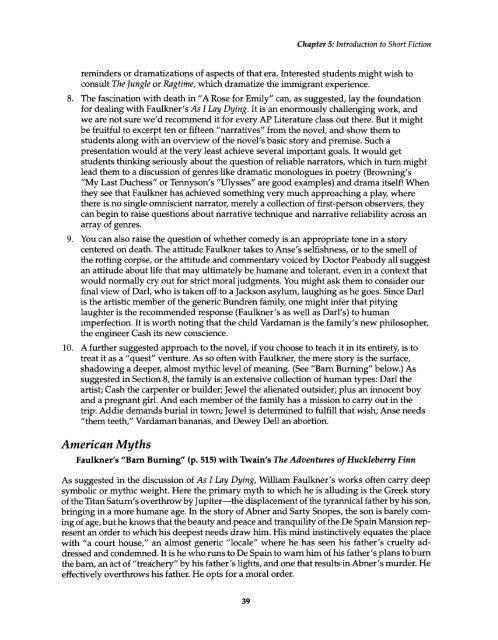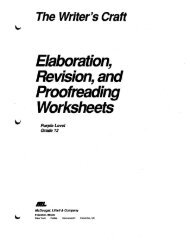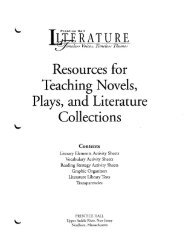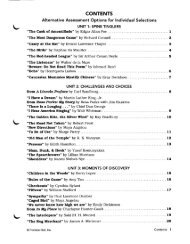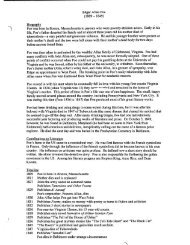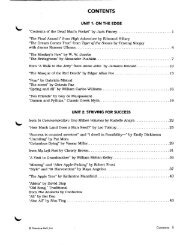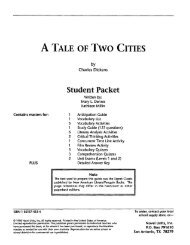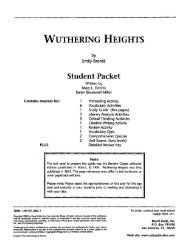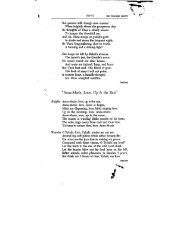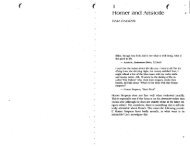English Literature & Composition - PopulationMe.com
English Literature & Composition - PopulationMe.com
English Literature & Composition - PopulationMe.com
You also want an ePaper? Increase the reach of your titles
YUMPU automatically turns print PDFs into web optimized ePapers that Google loves.
Chapter 5: Introduction to Short Fiction<br />
reminders or dramatizations of aspects of that era. Interested students might wish to<br />
consult The Jungle or Ragtime, which dramatize the immigrant experience.<br />
8. The fascination with death in "A Rose for Emily" can, as suggested, lay the foundation<br />
for dealing with Faulkner's As I Lay Dying. It is an enormously challenging work, and<br />
we are not sure we'd re<strong>com</strong>mend it for every AP <strong>Literature</strong> class out there. But it might<br />
be fruitful to excerpt ten or fifteen "narratives" from the novel, and show them to<br />
students along with an overview of the novel's basic story and premise. Such a<br />
presentation would at the very least achieve several important goals. Itwould get<br />
students thinking seriously about the question of reliable narrators, which in turn might<br />
lead them to a discussion of genres like dramatic monologues in poetry (Browning's<br />
"My Last Duchess" or Tennyson's "Ulysses" are good examples) and drama itself! When<br />
they see that Faulkner has achieved something very much approaching a play, where<br />
there is no single omniscient narrator, merely a collection of first-person observers, they<br />
can begin to raise questions about narrative technique and narrative reliability across an<br />
array of genres.<br />
9. You can also raise the question of whether <strong>com</strong>edy is an appropriate tone in a story<br />
centered on death. The attitude Faulkner takes to Anse's selfishness, or to the smell of<br />
the rotting corpse, or the attitude and <strong>com</strong>mentary voiced by Doctor Peabody all suggest<br />
an attitude about life that may ultimately be humane and tolerant, even in a context that<br />
would normally cry out for strict moral judgments. You might ask them to consider our<br />
final view of Darl, who is taken off to a Jackson asylum, laughing as he goes. Since Darl<br />
is the artistic member of the generic Bundren family, one might infer that pitying<br />
laughter is the re<strong>com</strong>mended response (Faulkner's as well as Darl's) to human<br />
imperfection. It is worth noting that the child Vardaman is the family's new philosopher,<br />
the engineer Cash its new conscience.<br />
10. A further suggested approach to the novel, if you choose to teach it in its entirety, is to<br />
treat it as a "quest" venture. As so often with Faulkner, the mere story is the surface,<br />
shadowing a deeper, almost mythic level of meaning. (See "Bam Burning" below.) As<br />
suggested in Section 8, the family is an extensive collection of human types: Darl the<br />
artist; Cash the carpenter or builder; Jewel the alienated outsider; plus an innocent boy<br />
and a pregnant girl. And each member of the family has a mission to carry out in the<br />
trip: Addie demands burial in town; Jewel is determined to fulfill that wish; Anse needs<br />
ilthem teeth," Vardaman bananas, and Dewey Dell an abortion.<br />
American Myths<br />
Faulkner's "Bam Burning" (p. 515) with Twain's The Adventures ofHuckleberry Finn<br />
As suggested in the discussion of As I Lay Dying, William Faulkner's works often carry deep<br />
symbolic or mythic weight. Here the primary myth to which he is alluding is the Greek story<br />
of the Titan Saturn's overthrow by Jupiter-the displacement of the tyrannical father by his son,<br />
bringing in a more humane age. In the story of Abner and Sarty Snopes, the son is barely <strong>com</strong>ing<br />
of age, buthe knows that thebeauty and peace and tranquility of the De Spain Mansion represent<br />
an order to which his deepest needs draw him. His mind instinctively equates the place<br />
with "a court house," an almost generic "locale" where he has seen his father's cruelty addressed<br />
and condemned. It is he who runs to De Spain to warn him of his father's plans to burn<br />
the bam, an act of "treachery" by his father's lights, and one that results in Abner's murder. He<br />
effectively overthrows his father. He opts for a moral order.<br />
39


